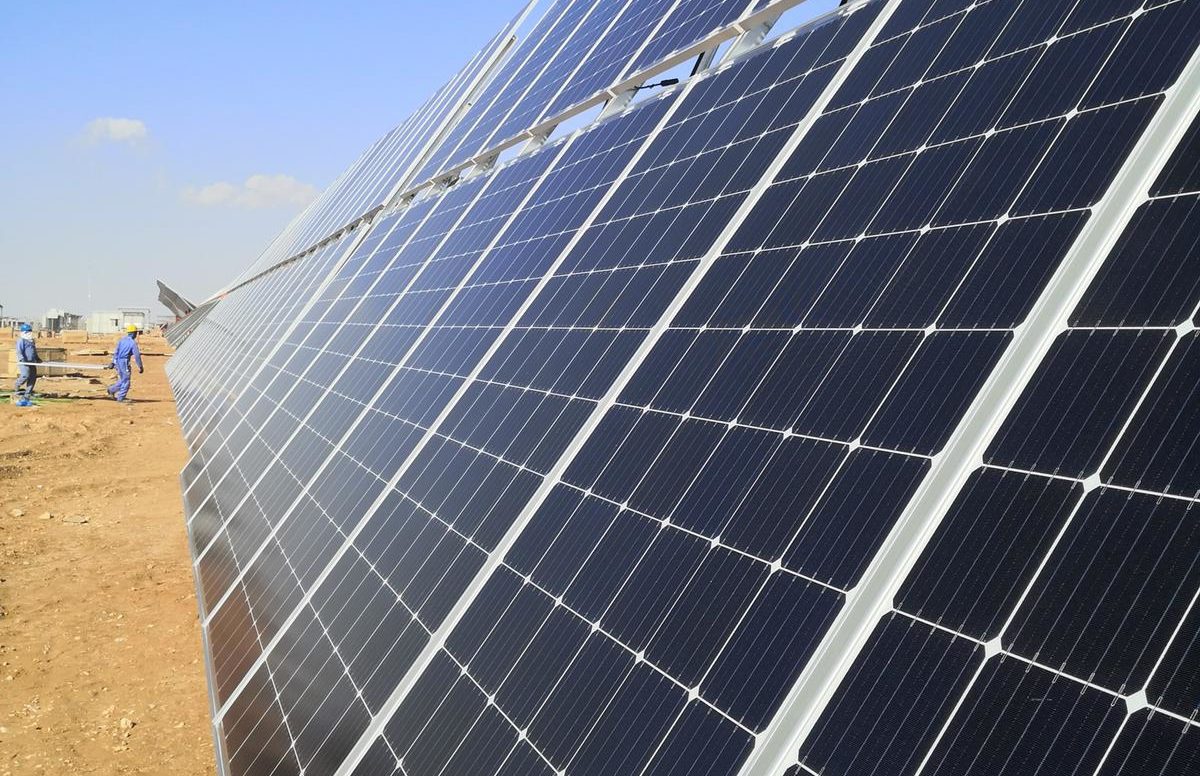Solar project developers in the Middle East are increasingly aware of the potential of n-type PV technology, particularly for bifacial systems, according to Chinese solar manufacturer Jolywood.
The company used the World Future Energy Summit in Abu Dhabi to highlight its claim its 105 MWac project in Oman is evidence the value proposition of n-type technology is being demonstrated in the region, despite a price premium on p-type PERC alternatives.
The Oman project being developed near the southern city of Amin deploys Jolywood n-type modules on single-axis trackers supplied by Chinese manufacturer Arctech. The Chinese tracker supplier has previously announced that the array is sized at 125 MWdc. The facility is being developed by Japanese investor Marubeni, with Indian business Sterling and Wilson providing engineering, procurement and construction services.
The 105 MWac array, set for completion this month, is the first large scale solar project in Oman.
Advantages
“Here in the Middle East, the conditions are very fierce [with temperatures] as high as 60-70 degrees Celsius on the ground,” said Jolywood’s head of international sales Alfred Liu. “In the high temperature conditions, n-type enjoys many more advantages, [including] a temperature coefficient [of] -0.32%.” Some of the best p-type PERC cells exhibit temperature coefficients of around -0.37% to -0.39%.
Jolywood deploys tunnel oxide passivated-contact (TOPCon) n-type cell technology in its modules and claims to be able to hit 415 W in a 72-cell module with an efficiency of 20.66%. With n-type products inherently free from light-induced degradation, the technology also offers a low degradation rate, with its products guaranteed to deliver 87.4% of their initial power output after 30 years. Jolywood also claims a bifacial factor of 80% for its panels.
“Here in the Middle East the sand is highly reflective, so it is like a ‘gift from god’ to use bifacial [technology], added Liu. “Among bifacial, n-type technology stands out.”
Jolywood also announced it has expanded its annual PV module production capacity from 1 GW to 3 GW.
This content is protected by copyright and may not be reused. If you want to cooperate with us and would like to reuse some of our content, please contact: editors@pv-magazine.com.




Jolywood would be well advised to familiarise itself thoroughly with this study.
https://pubs.acs.org/doi/10.1021/acs.estlett.7b00197
In the MENA region it is common for sand and dust to cause up to 1% daily loss of output from PV power plants. Since there is also no water in the desert areas, the O&M costs are enormous.
I have explained all this in a separate report on LinkedIn:
https://www.linkedin.com/pulse/dont-put-your-money-sand-rich-dzikowski/
Hi Rich,
Thanks for your comment. I think the robotic cleaning is becoming pretty standard in the Middle East. The latest I heard, from Masdar engineers, was that the sweet spot in the UAE is for each module to be cleaned every 3-4 days. For the rear side it may have to be manual cleaning, which I imagine would be more complicated and costly.
Jonathan